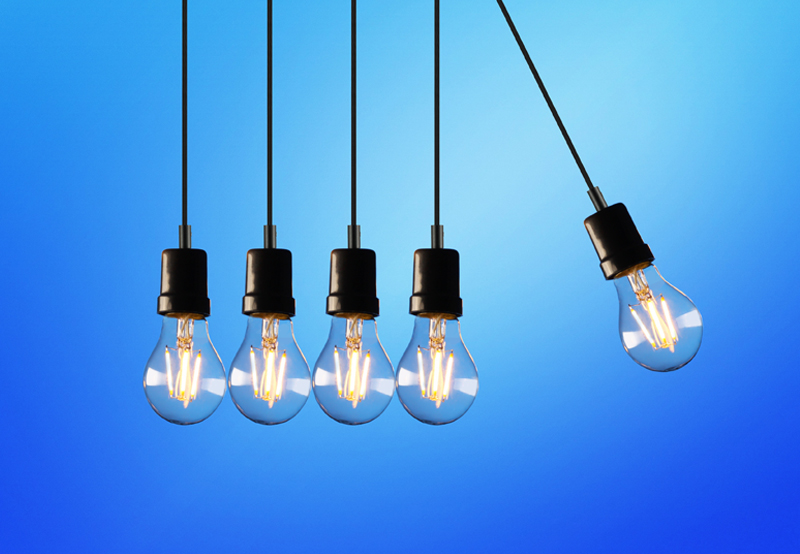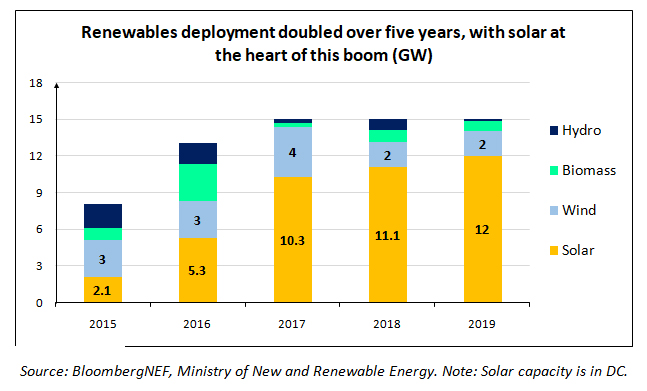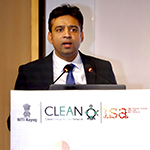
India's March for Sustainable Future
Posted On Tuesday, October 28, 2020 by Nishant Tiwary under Sustainable Development

India's March for Sustainable Future
According to the World Bank, access to electricity can aid in the progress of a billion people who are located in Sub-Saharan Africa and South Asia.1 India did achieve a hundred per cent electrification in all its villages.2 However, challenges still linger to provide 24X7 uninterrupted, reliable and mostly green electricity to all the households.
In order to meet this humungous challenge, India could have banked on the conventional form of energy which is fossil fuel-based energy. However, 2015 Paris Climate Agreement has altered the way in which we look at the energy generation as well as usage. The twin challenge of climate change and energy accessibility have created a new paradigm around the development of renewable energy. Renewables form the most important facet of the sustainable development. In order to fuel our economy, we can no longer can fire it with the fossil fuels, the renewables have to take the mantle from the fossil fuels.
India has precisely found this sweet spot and is embarking on the sustainable journey of development. In 2015, India has committed to develop 175 GW of clean energy by 2022 which is more than 300 per cent increase in the installed capacity of renewables in less than decade. Further, India is looking to reach a new milestone of 450 GW of clean renewable energy by 2030. Solar energy, particularly, has emerged as a front runner amongst all the renewables. India has made massive commitment of creating 100 GW of capacity based on solar out of the targeted 175 GW of clean energy by 2025.
It is in testimony to India’s commitment that, India has emerged as the most attractive emerging market for clean energy investment in Climate scope 2019.3 India, currently, has the world’s third largest installed power generation capacity in renewable energy. These have not been achieved overnight. India has a strong commitment towards sustainable future and with all the thrust towards the solar and other forms of clean energy. It is well in its track to achieve its Nationally Determined Contributed under Paris Agreement of increasing the share of non-fossil based installed energy capacity in the energy mix to more than 40 per cent by 2030.
In 2018, India had around $15.9 billion investment in the clean energy out of which more than half was accounted by solar energy, and followed closely by wind energy. From 2017 onwards, India has been adding 15 GW of renewable energy capacity every year and more than 66 per cent of which is solar energy. At the same time, the new coal based energy capacity remained even below the solar energy. This is a testament to the clear and decisive shift towards the cleaner power.

Government has undertaken various steps at both nation and international front to increase the thrust towards the solar energy, in particular. First and foremost, the setting of such ambitious targets of 175 GW, in turn has created a charged atmosphere in the country. As a result of which, till 2019, India has the world’s largest renewables auctions market accounting for 89GW (for a period of 2003-19). Secondly the impetus towards creation of solar parks has given big boost to the solar energy. India is home to some of the world’s largest solar farms such as Bhadla Solar Park in Rajasthan with a total capacity of 2245 MW and Pavagada Solar Park in Karnataka with a total capacity of 2050 MW.4 Further, government has also created renewable purchase obligations for the DISCOMs which has integrated renewables into the distribution grids. Additionally, the financial instruments in the form of capital subsidy, 100% foreign direct investment, Inter-State Transmission System (ISTS) waivers and lower corporate tax have incentivized the private companies to drive the India’s clean energy projects. Whereas on the global front, India took an initiative by creating the International Solar alliance (ISA) with France, for the sunshine countries, which lie between the two tropics, either partly or completely and it’s on way to extend membership to all UN member nations. It is to aid the cause of solar energy and drive for the member countries for enhanced deployment of solar technologies. Under the mandate of ISA, India is planning to launch World Solar Bank which would help the member countries in meeting the financial requirements for realizing the goal of the clean energy driven future.
The continuation of India’s clean power revolution is critical to global climate efforts. While meeting the energy requirement of 1.38 billion people, India has chosen to take the road mandated by the Sustainable Development Goal 7.5 The path India has chosen to ‘ensure access to affordable, reliable, sustainable and modern energy for all’, can become a guiding principle for the other nations. If India can become the fastest growing economy in the world on the bank of green and clean energy, then rest of world surely can follow the similar path and the world can surely achieve the Paris targets.
References
1- World Bank. “Access to Energy Is at the Heart of Development.” Text/HTML. Accessed October 10, 2020. https://www.worldbank.org/en/news/feature/2018/04/18/access-energy-sustainable-development-goal-7
2- “Access to Electricity (% of Population) - India | Data.” Accessed October 10, 2020. https://data.worldbank.org/indicator/EG.ELC.ACCS.ZS?locations=IN
3- Climatescope 2019. “Climate scope 2019.” Accessed October 10, 2020. https://global-climatescope.org
4- “List of Photovoltaic Power Stations.” In Wikipedia, September 2, 2020. https://en.wikipedia.org/w/index.php?title=List_of_photovoltaic_power_stations&oldid=976261150
5- “Goal 7 | Department of Economic and Social Affairs.” Accessed October 10, 2020. https://sdgs.un.org/goals/goal7

NISHANT TIWARY
Nishant is an Indian Civil Servant, currently posted as Officer on Special Duty (OSD) to the Union Minister for Power, New and Renewable Energy, India. He is a President and the Prime Minister of India awardee, an international author for the Oxford University Press, and a highly decorated and accomplished Public Servant. Deeply committed to achieving SDGs and reducing the impact of climate change, he is contributing to path-breaking initiatives and policies as the Coordinator, International Solar Alliance (ISA). He has been instrumental in implementing the Aadhaar—the world’s largest biometric database at the Unique Identity Authority of India (UIDAI). He is also a Fellow at Global Policy Insights.
Recent Articles
- India's March for Sustainable Future
- Water Insecurity in India
- A New Paradigm in the Financing of Solar Energy Projects
- Land Management: A step towards mitigating Land Degradation
- Impact of COVID-19 on Water Issues and the Way Forward
- Humanity better off with world order without ‘Chinese characteristics’
- Models to Make Vocational Training Work in India
- Will Seed Bill 2019 deliver the goods?
- Stubble Burning Farmers: Architects of Delhi’s Breathing Woes, or Hapless Scapegoats?
- Does India Need More Policy Action for Its Senior Citizens?
- Creating a future-proof curriculum for the digital age
- Policymakers, wake up! Floods in Chennai are not Alarm bells, they are explosions
- 'Environmental Finance — Private Capital and Private Profits for Public Gain— Pretty Promising, though not without Pain'
- Inclusive Innovations in Education Praxis
- Antibiotic Resistance: Fighting a Multi-Headed Demon
